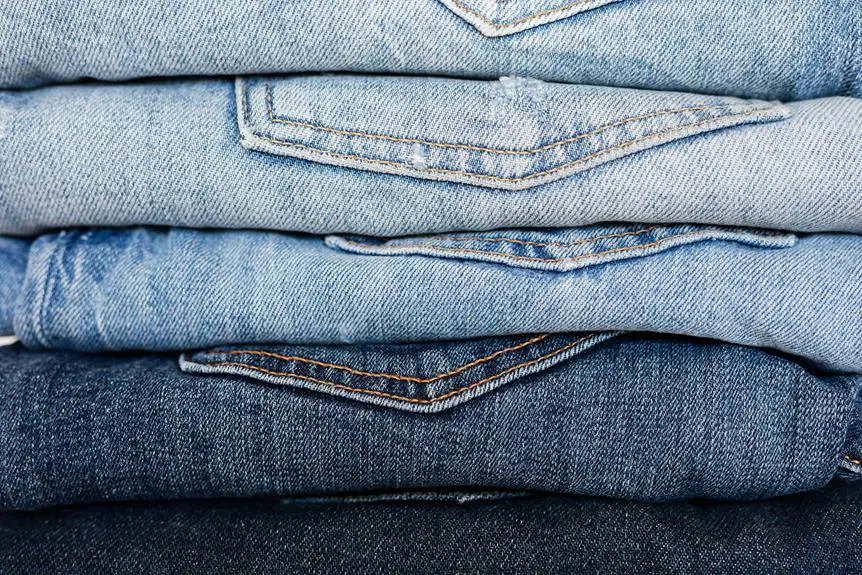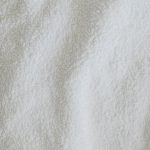When you're in the market for Oxford fabric, knowing how to identify high quality can make a significant difference in your purchase. You'll want to pay attention to the weave pattern, texture, and weight, as these elements hint at the fabric's durability and feel. A smooth, consistent weave often indicates a superior product. But that's just the beginning; there are several nuances that can determine the fabric's longevity and performance. So, what should you really be on the lookout for to ensure you're making a wise investment?
Table of Contents
Understanding Oxford Fabric
Oxford fabric, known for its durability and versatility, is a popular choice in clothing and home textiles. You'll often find it in dress shirts, casual wear, and even upholstery. This fabric gets its name from the University of Oxford, where it was originally developed. Its distinctive weave creates a textured surface that not only looks appealing but also feels sturdy.
When you touch Oxford fabric, you can sense its quality. It's typically made from cotton or a cotton blend, making it breathable and comfortable. You might appreciate its ability to resist wrinkles, which is ideal for busy lifestyles. The fabric's weight can vary, but you'll generally find it to be medium to heavyweight, offering great structure without being overly stiff.
Another important feature of Oxford fabric is its water resistance. While it's not entirely waterproof, it does provide some protection against light rain, making it a good choice for outdoor clothing.
Weave Patterns to Look For
When evaluating high-quality Oxford fabric, pay close attention to the weave patterns, as they can significantly impact both the fabric's appearance and durability. The most common pattern you'll encounter is the traditional basket weave, which features a crisscross design that enhances strength and texture. Another popular option is the plain weave, offering a smooth finish and uniform look, making it versatile for various applications.
Here's a quick reference table to help you identify key weave patterns:
| Weave Pattern | Description | Best Use |
|---|---|---|
| Basket Weave | Crisscross design for strength | Casual shirts, shorts |
| Plain Weave | Simple, smooth texture | Dress shirts, uniforms |
| Twill Weave | Diagonal lines for durability | Jackets, trousers |
| Oxford Weave | Characteristically textured | Casual wear, bedding |
Assessing Texture and Feel
When you're assessing the texture and feel of Oxford fabric, focus on three key aspects.
First, check the surface smoothness to gauge its quality.
Then, compare the weight and thickness.
Surface Smoothness Evaluation
Evaluating the surface smoothness of fabric involves running your fingers across the material to feel for any irregularities or rough patches. You want to ensure the fabric feels soft and even, with no bumps or inconsistencies. High-quality Oxford fabric typically has a refined finish, giving it a smooth texture that enhances its overall appeal.
As you touch the fabric, pay attention to how it responds. A premium Oxford will glide under your fingers effortlessly, while lower-quality options might snag or feel coarse. Look for a fabric that feels luxurious and pleasant against your skin, as this can indicate superior craftsmanship.
When examining the surface, also check for any visual cues. A well-constructed Oxford fabric should have a consistent weave pattern, which contributes to its smoothness. If you notice uneven patterns or irregularities in the weave, it might signal lower quality.
Weight and Thickness Comparison
The weight and thickness of Oxford fabric play a crucial role in determining its overall texture and feel, affecting both comfort and durability. When you're assessing Oxford fabric, you'll want to start by feeling the material in your hands. A heavier fabric often indicates higher quality, as it suggests denser threads and a more substantial weave. If the fabric feels light and flimsy, it may not hold up well over time.
Next, consider the thickness. A thicker fabric usually provides a richer texture, which can enhance the tactile experience. You should also pay attention to how the fabric drapes. A high-quality Oxford will have a nice, structured fall, rather than feeling limp or overly stiff.
Don't forget to check for consistency in weight and thickness across the entire piece. Any variations can signal poor quality or manufacturing issues. By weighing these factors, you'll get a better sense of the fabric's overall quality and suitability for your needs.
Ultimately, the right weight and thickness can significantly enhance the comfort and longevity of your Oxford fabric items, making your investment worth it.
Durability and Resilience Testing
Assessing the durability and resilience of Oxford fabric requires a close examination of its texture and feel, which can reveal how well it will withstand everyday wear and tear.
When you touch the fabric, consider the following key factors:
- Weight: Heavier fabrics tend to be more durable, providing better resistance to fraying and tearing.
- Weave: A tight, even weave enhances the fabric's strength and helps it maintain its shape over time.
- Finish: Look for a water-resistant or stain-repellent finish; this not only protects the fabric but also aids in its overall longevity.
- Flexibility: High-quality Oxford fabric should feel flexible yet sturdy. If it feels too stiff, it may not withstand bending or stretching.
Evaluating Colorfastness
When you're evaluating the colorfastness of Oxford fabric, you'll want to start with fade resistance testing to see how well the colors hold up over time.
Next, consider how sunlight exposure impacts the fabric's hues, as prolonged sunlight can lead to fading.
Fade Resistance Testing
To ensure your Oxford fabric maintains its vibrant colors, you'll want to perform fade resistance testing to evaluate its colorfastness. This testing helps you determine how well the fabric can withstand exposure to various elements that may cause colors to dull over time.
Here's how you can conduct a simple fade resistance test:
- Select a Sample: Cut a small piece of the Oxford fabric you want to test.
- Prepare the Testing Environment: Choose a location that can replicate conditions like washing, exposure to moisture, or light.
- Test with Water: Lightly dampen the fabric sample. Rub it with a white cloth to see if any color bleeds onto the cloth.
- Simulate Sunlight: Place the fabric sample in direct sunlight for a few hours. Compare it with an untreated section to observe any color fading.
Sunlight Exposure Impact
Sunlight exposure can significantly impact the colorfastness of Oxford fabric, making it important to understand how different levels of sunlight can affect the vibrancy of its colors over time. When you choose Oxford fabric, consider how it'll be used and where it'll be placed, as prolonged exposure to sunlight can lead to fading and loss of color quality.
To evaluate colorfastness, you can compare various fabric samples under controlled sunlight conditions. The following table provides a quick reference for the effects of sunlight exposure on Oxford fabric:
| Exposure Duration | Color Vibrancy Level | Fading Observed | Recommended Use |
|---|---|---|---|
| 1 Week | High | None | Indoor use |
| 2 Weeks | Moderate | Slight fading | Semi-outdoor use |
| 4 Weeks | Low | Noticeable | Limited outdoor exposure |
| 8 Weeks | Very Low | Severe fading | Not recommended outdoors |
Washing Durability Assessment
Evaluating the washing durability of Oxford fabric is crucial for maintaining its colorfastness and overall appearance over time. You want your fabric to look vibrant and fresh after repeated washes, so testing its color retention is key.
Here's how you can assess the colorfastness of Oxford fabric:
- Read Care Labels: Always check the care instructions before washing. This helps you understand the recommended washing methods that preserve color.
- Conduct a Test Wash: Before washing the entire fabric, do a test wash with a small piece. Use cold water and mild detergent to see how the color holds up.
- Inspect for Bleeding: After the test wash, look for any color bleeding. If the water changes color, the fabric may not be colorfast.
- Evaluate Drying Methods: Air drying is often gentler than machine drying. Hang the fabric to dry and observe any fading.
Weight and Thickness Considerations
When choosing Oxford fabric, pay close attention to its weight and thickness, as these factors significantly impact durability and feel.
Generally, a higher weight indicates a more robust fabric, making it suitable for items like bags and jackets. You'll often find weights measured in grams per square meter (GSM). A good quality Oxford fabric typically ranges from 150 to 300 GSM, with heavier options providing added durability.
Thickness is another essential consideration. Thicker fabrics can offer a more substantial feel and enhanced protection against wear and tear. If you're looking for something that can withstand daily use, opt for a fabric that feels dense and sturdy.
On the other hand, lighter fabrics may be more breathable and suitable for casual wear or warmer climates, but they can lack the longevity you might need for certain applications.
As you evaluate your options, remember that the balance between weight and thickness will largely depend on your intended use. Consider how the fabric will perform in real-world conditions, and choose accordingly to ensure you get the best quality Oxford fabric for your needs.
Checking for Durability
To ensure you're selecting high-quality Oxford fabric, it's crucial to check its durability through various tests and observations. A durable fabric not only stands the test of time but also maintains its appearance and functionality.
Here are some practical steps you can take to assess the durability of Oxford fabric:
- Tug Test: Gently pull on the fabric to see if it stretches or tears easily. High-quality Oxford should resist deformation and return to its original shape.
- Water Resistance: Splash a little water on the fabric. Durable Oxford will repel water instead of absorbing it, indicating a protective finish.
- Wear and Tear: Inspect the fabric for any signs of fraying or loose threads. Quality Oxford should have tightly woven fibers that withstand regular use.
- Colorfastness: Rub a damp cloth against the fabric to check for color bleeding. High-quality Oxford will retain its color without fading or smudging.
Comparing Price Vs. Quality
While assessing durability is vital, understanding the balance between price and quality can help you make a more informed choice when selecting Oxford fabric. You might find that some options are more budget-friendly but compromise on quality, while others may seem pricey yet offer superior performance and longevity.
When you evaluate Oxford fabric, consider what you're paying for. High-quality fabric often undergoes better manufacturing processes, which enhance its durability and appearance. If you spot a deal that seems too good to be true, it might be worth investigating the fabric's weight, weave, and finish. Low-cost options might use lighter materials that wear out quickly, costing you more in the long run.
It's essential to remember that investing in quality Oxford fabric can save you money over time, as it tends to last longer and maintain its appearance. So, weigh your options carefully: a slightly higher price tag can often mean better quality.
Ultimately, finding that sweet spot between price and quality will ensure you choose fabric that meets your needs and stands the test of time. Trust your instincts and do your research; it'll pay off!
Frequently Asked Questions
What Are Common Uses for High-Quality Oxford Fabric?
You'll often find high-quality oxford fabric used in shirts, bags, and outdoor gear. Its durability and versatility make it perfect for both casual and formal wear, ensuring you look stylish and remain comfortable wherever you go.
Can Oxford Fabric Be Machine Washed Safely?
Yes, you can safely machine wash oxford fabric. Just use cold water and a gentle cycle to maintain its quality. Avoid bleach and high heat; air drying's best to prevent any shrinkage or damage.
How Does Oxford Fabric Compare to Other Materials?
When you compare Oxford fabric to other materials, you'll notice it's durable, breathable, and versatile. Unlike some fabrics, it resists wrinkles and maintains a classic look, making it ideal for both casual and formal wear.
Is Oxford Fabric Suitable for Outdoor Use?
Yes, Oxford fabric's durability makes it suitable for outdoor use. It resists wear and tear, but you should check for water-resistant coatings if you need extra protection against moisture and the elements.
What Brands Are Known for High-Quality Oxford Fabric?
When you're looking for high-quality Oxford fabric, brands like Brooks Brothers, Ralph Lauren, and Uniqlo stand out. They consistently deliver durable, stylish options that can elevate your wardrobe, ensuring you're always dressed to impress.
- Recycling Nonwoven Fabrics: Is It Possible? - July 11, 2025
- Recycling Nonwoven Fabrics: Is It Possible? - July 11, 2025
- Recycling Nonwoven Fabrics: Is It Possible? - July 11, 2025







